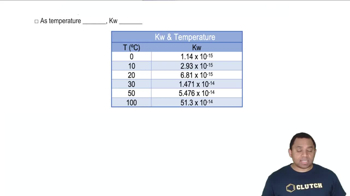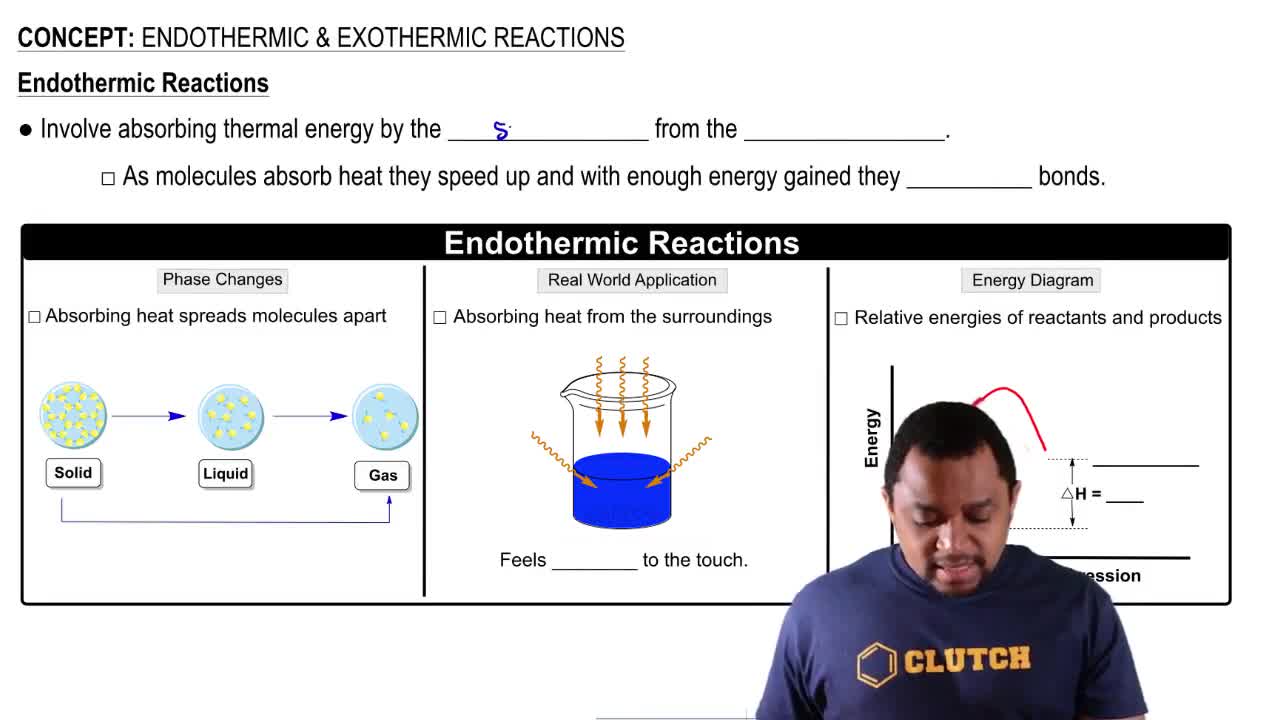Here are the essential concepts you must grasp in order to answer the question correctly.
Rate Constants and Temperature Dependence
Rate constants (kf for the forward reaction and kr for the reverse reaction) are crucial in determining the speed of a chemical reaction. They are temperature-dependent, often described by the Arrhenius equation, which shows that as temperature increases, the rate constants typically increase. This relationship helps in understanding how reaction rates change with temperature, which is essential for analyzing the given data.
Recommended video:
Kw Temperature Dependence
Equilibrium and Reaction Direction
In a reversible reaction, the equilibrium position can shift based on the relative magnitudes of the forward and reverse rate constants. If kf is significantly smaller than kr, the reaction favors the products at equilibrium. Conversely, if kf increases relative to kr with temperature, it suggests that the reaction may favor the formation of products, indicating the nature of the reaction (endothermic or exothermic) based on energy changes.
Recommended video:
Endothermic vs. Exothermic Reactions
Endothermic reactions absorb heat from the surroundings, leading to an increase in the rate of the forward reaction with temperature, while exothermic reactions release heat, often resulting in a decrease in the forward rate with increasing temperature. By analyzing the temperature dependence of the rate constants, one can infer the heat exchange associated with the reaction, thus determining whether it is endothermic or exothermic.
Recommended video:
Endothermic & Exothermic Reactions
 Verified step by step guidance
Verified step by step guidance

